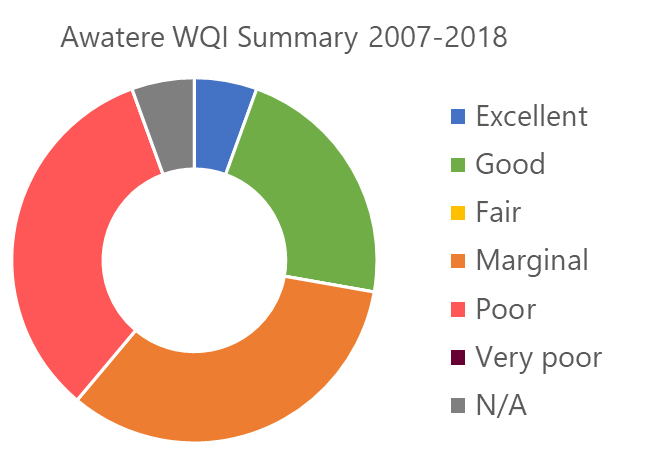Historic Freshwater State
Special investigation – Potential effects of Infiltration Galleries on the Awatere River 2016
The Awatere River has a naturally elevated turbidity for much of the year due to fine suspended sediments, mainly derived from the highly erodible underlying geology of the mid-catchment.
High suspended sediment loads in the river cause problems for water abstractors. Fine sediment drawn into irrigation infrastructure can increase wear on pumps, block filters and irrigation drippers and so forth. Infiltration gallery intakes are perceived to offer a potential solution to these problems associated with fine sediment.
The 2016 report was commissioned to consider potential effects of instream works associated with infiltration gallery water takes in the Awatere River, including the possibility of cumulative effects arising from maintenance of multiple gallery intakes from the river.
Concerns were raised over the potential adverse ecological effects of instream works associated with the construction and maintenance of infiltration galleries in the Awatere River. In particular, the potential for cumulative effects resulting from maintenance of multiple galleries, such as habitat disturbance and interruption of spawning and fish passage. The 2016 report was commissioned to consider these potential effects.
The report produced several recommendations, including gathering more definitive data on instream gallery works, continuous turbidity monitoring, and sedimentation monitoring and control measures.
The completion of this report again highlighted the need for ongoing management of riverbed water intake structures. This conclusion supports the ongoing work of the Awatere Water Users Group (AWUG) who continue to work with the council and local experts to recognise ongoing improvements in techniques and technologies in riverbed activities by water users over time, the adaptive management of responding to changing environmental conditions, and future changes to the legal statutory requirements of waters users. The good management practices recommended are seen as an integrated package and not singular measures; these are contained in a continually updated document which has been in use since 2013.
The AWUG document does not replace the requirement for an appropriate resource consent for riverbed activities but does assist with informing water users with information and education for developing robust management strategies for their riverbed activities under a site specific management plan.



